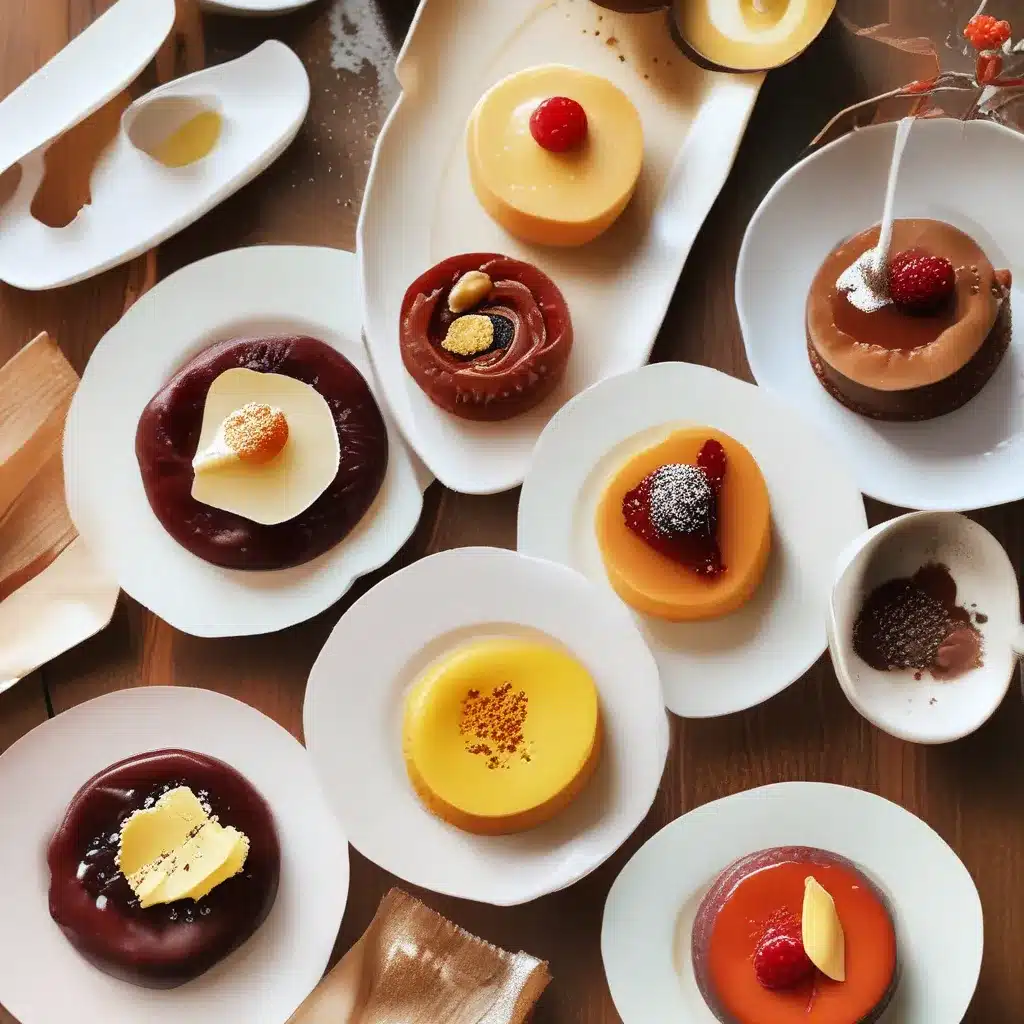
Discovering the Delightful World of Korean Sweets
As I stepped through the doors of the hotel, the aroma of freshly brewed tea and fragrant spices wafted through the air, instantly piquing my curiosity. I had come to Seoul, South Korea, on a mission to learn the art of crafting authentic Korean desserts, and this was my chance to embark on a delectable adventure.
The hotel’s cooking class, led by a renowned local chef, promised to be an immersive experience, transporting me from the bustling streets of Seoul to the cozy kitchen where the magic would unfold. With eager anticipation, I signed up, eager to uncover the secrets behind some of the most tantalizing Korean sweets.
Diving into the Diversity of Korean Desserts
Before the class began, I had the chance to explore the hotel’s website, which provided a wealth of information about the local culinary scene. I was amazed to learn about the sheer variety of Korean desserts, each with its own unique flavor profile and cultural significance.
From the delicate and fragrant Joungy’s Cooking Class treats like Yaksik (steamed rice cakes with jujube and pine nuts) to the chewy and satisfying Tteok (rice cakes), I knew I was in for a delightful learning experience.
As I scrolled through the Maangchi’s Korean cooking class offerings, my mouth watered at the thought of mastering the art of creating Hotteok (fried dough stuffed with a brown sugar and cinnamon filling) and Bingsoo (shaved ice with sweetened condensed milk and various toppings).
Embracing the Joy of Korean Cooking
The day of the class arrived, and I couldn’t wait to don my apron and dive into the world of Korean desserts. As I entered the kitchen, I was greeted by the warm smile of the chef, who immediately put me at ease.
“Welcome, everyone!” she exclaimed, her energy infectious. “Today, we’re going to explore the rich tapestry of Korean sweets and learn how to create some of the most beloved delicacies.”
I listened intently as she shared her insights, gleaned from years of honing her craft. She spoke passionately about the cultural significance of each dessert, how they were traditionally served, and the importance of using high-quality, locally-sourced ingredients.
Mastering the Art of Korean Desserts
As we began the hands-on portion of the class, I was surprised by the level of attention and precision required. The chef guided us through each step, ensuring we understood the importance of technique and timing.
“You see,” she explained, “the perfect Tteok is all about the right balance of rice flour, water, and sugar. Too much or too little of any ingredient can ruin the delicate texture.”
I nodded in understanding, carefully measuring and mixing the ingredients, my senses heightened as the familiar scents of cinnamon and nutmeg filled the air.
| Dessert | Key Ingredients | Preparation Time |
|---|---|---|
| Yaksik | Glutinous rice, jujube, pine nuts, honey, cinnamon | 60-90 minutes |
| Tteok | Glutinous rice flour, water, sugar | 30-45 minutes |
| Hotteok | Wheat flour, yeast, brown sugar, cinnamon, nuts | 60-90 minutes |
| Bingsoo | Shaved ice, sweetened condensed milk, red beans, fruit | 15-20 minutes |
As I carefully rolled and shaped the Tteok, I couldn’t help but feel a sense of pride and accomplishment. The chef’s encouragement and attention to detail made the process feel almost therapeutic, and I found myself becoming lost in the rhythm of the task.
Savoring the Fruits of Our Labor
Finally, the moment of truth arrived. We gathered around the table, admiring our handiwork as the chef presented the finished desserts. The vibrant colors, delicate textures, and tantalizing aromas were enough to make my mouth water.
“Now, let’s dig in and enjoy the fruits of our labor,” the chef said, her eyes twinkling with delight.
As I took the first bite of the Yaksik, I was transported to a world of sweetness and spice, the flavors dancing on my tongue. The Tteok, with its chewy exterior and soft, pillowy interior, was a revelation, and the Hotteok’s fried dough and warm, gooey filling left me craving more.
But it was the Bingsoo that truly captured my heart. The contrast of the icy shaved ice, the creamy condensed milk, and the bursts of fresh fruit was a revelation, and I found myself savoring every spoonful, letting the flavors linger.
Bringing Korean Desserts Home
As the class came to an end, I felt a sense of accomplishment and a newfound appreciation for the art of Korean dessert-making. The chef shared her wisdom, her passion for her craft, and her joy in sharing it with us. I left the hotel, my heart full and my mind brimming with ideas for recreating these delectable treats at home.
Thanks to the knowledge I gained from the Reddit discussion and the Maangchi cooking class, I now feel empowered to bring a taste of Korea into my own kitchen. The hotel’s website has become a valuable resource, connecting me to the vibrant culinary scene of Seoul and inspiring me to continue exploring the wonders of Korean desserts.
As I reflect on my time in the cooking class, I can’t help but smile. It was an experience that not only filled my belly but also nourished my soul, reminding me of the power of food to bring people together, foster cultural exchange, and create lasting memories. I can’t wait to share my newfound skills with friends and family, and perhaps even plan a return trip to Seoul to delve deeper into the delectable world of Korean sweets.

